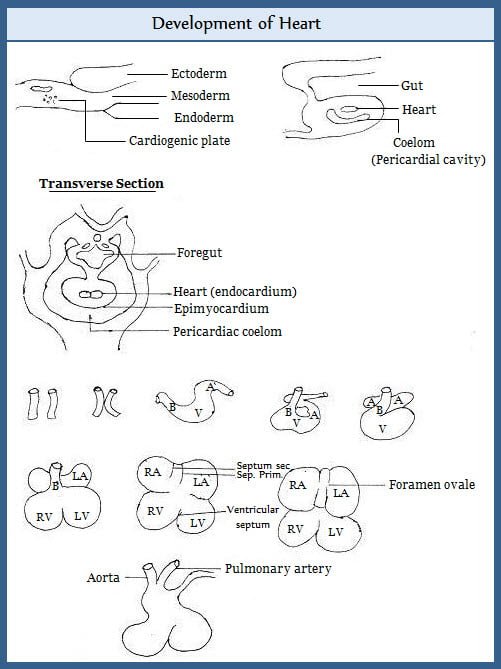Development of Heart of Animals
The Heart is a specialized blood vessel with a lumen and thick muscular walls. In mammals, it arises from a cardiogenic plate located in front of the head in the splanchnic mesoderm and beneath the pericardial coelom. Due to a reversal in position, the heart primordium comes to lie above the pericardial coelom beneath the foregut.

The earliest indication of the cardiac primordia is the formation of two endothelial tubes which fuse in front and later behind, to form a single tube. The internal endothelial tube becomes the endocardium and the mesodermal layer surrounding it forms the myocardium and epicardium. It is suspended by the dorsal mesocardium from the gut, which is also soon lost.
At this stage, this single tube by constrictions, presents three regions viz., a) the paired atria receiving the veins, b) the single ventricle and c) the single bulbus continued in front by the ventral aortae. A sinus venosus is soon demarcated from the atrium. Due to the greater rate of the growth of the heart tube than the pericardial cavity, it is soon bent into a simple spiralled ‘S’.
A continuation of this growth process drops the bulbo-ventricular loop still further backward and downward. By development of septa, indicated externally by grooves, the heart presents the two ventricles and the aorta and pulmonary artery. The interatrial septum presents the foramen ovale.
The two atria are separated by the development of the septum primum and the septum secundum which fuse to form the interatrial septum. The ventricular primordium is subdivided into two ventricles by the development of the interventricular septum. The bulbus is split into the aorta and the pulmonary artery by the development of two endocardial septa which fuse.

